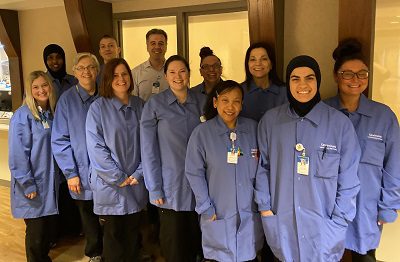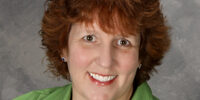Cindy Johnson, MS, MLS(ASCP)CM, ASCLS President

We have been encouraged by ASCLS passionate past presidents to “Be the Face,” “Promote the Profession,” “Get Out of the Basement,” “Share Your Passion,” and “Tell Your Story.” During the ASCLS-AGT Joint Annual Meeting in Charlotte last June, President-Elect (PE) Maddie Josephs, in response to the PE candidate question, stressed the importance of increasing our visibility as a laboratory profession.
To illustrate how visibility can be integral to professional development, I explore the accomplishments that ASCLS member Jeremy Angell has achieved within a laboratory support services team to heighten engagement and involvement—not only within the laboratory, but as proud members of the healthcare team.

Jeremy: When I share this story, I often quip that the answer is, “by accident.” I had recently achieved my bio-chem/med degree and was exploring next career steps when I received a call from a clinical laboratory in St. Cloud, Minnesota. The director at that time was recruiting for an entry-level phlebotomist/laboratory assistant position. It was closer to home and the more metropolitan regions of the state. I had worked a similar position in college. It seemed like a good temporary—remember that word, temporary—stop until my career took off. I accepted the position, and my new bride and I packed up and relocated.
While continuing to explore external opportunities, I found myself two years later accepting a newly formed lead position within the laboratory support department. With one more year under my belt, it developed into an expanded lead role. Within six months, a changed structure under new direction offered the opportunity to apply for and eventually accept the manager role that has been the bulk of my nearly 24 years as a (temporary?!?) CentraCare laboratory employee; a role that continues to evolve and challenge in our ever-changing medical culture.
Cindy: What are your thoughts on the role of visibility in the laboratory profession?
Jeremy: I wouldn’t be where I am today without a focus on visibility. I think you can look at it two ways. First it is a reflection of yourself—a shadow you cast as a team member and leader. If others can see you and you can emulate how you want your department to be perceived, you can build relationships on that foundation. Subsequently, you must step out of the department and form those interdisciplinary connections that keep your department at the forefront and recognized for its achievements.
Cindy: How have you worked to increase visibility with your team? Do you feel that has had an impact within the laboratory, the organization, or the patients?
Jeremy: Laboratory support positions can be challenging. They are entry-level, physically demanding, often demonstrate high turnover, and may not always get the respect they deserve. And yet, they are critical to the quality of care we deliver. They represent the face of the laboratory in many facilities—the visible manifestation of a behind-the-scenes department.
I think we can all agree that core approaches, such as career laddering models and education, are crucial for development. I like to continually challenge the team, especially the emerging leaders, to veer from their comfort zones and become more visible. Can a phlebotomist or laboratory assistant write a procedure used for the whole department? An entire hospital or system? Can they represent the laboratory on a multi-disciplinary committee? Can they drive process improvement initiatives? Absolutely! They train other department staff, internally and externally. They develop student training protocols. They act as a resource throughout the organization. Gone are the days of “techs over there, support over here.” They represent a respected specialty of their own.
I find that these opportunities are keeping them engaged and getting them recognized by their peers, both inside and outside of the laboratory, as key players with roles integral to provision of care. In turn, they take more pride in their work and have become empowered proponents for greater change. That has an impact on all facets of their work, right down to the care provided at the patient level.
Cindy: As a leader and an ASCLS member, has the concept of visibility impacted your professional development?
Jeremy: Without question, visibility has provided a platform to engage with other colleagues and has greatly contributed to the evolution of my career. CentraCare has made available new and exciting opportunities to expand my system involvement, and with the increasing professional growth and comfort of my team, I have been privileged to explore and accept them as fresh challenges.
ASCLS has also provided me with multiple opportunities to serve on committees and task forces, publish articles, plan for and speak at state and national meetings, represent the scientific assembly in our state, and now fun things like interviews with the ASCLS president! This type of visibility continues to open professional doors.
Cindy: Any closing thoughts?
Jeremy: I believe there are a lot of facets to increasing visibility. No matter how you define them, each component is something for which we must continue to strive as laboratory professionals. The benefits are great for our laboratories, our teams, and ourselves.
Many of our ASCLS members are promoting the valuable role of the laboratory and increasing our visibility by being very active on social media, sharing their knowledge and expertise not only to their laboratory colleagues but to health care professionals and the general public. Thank you for your passion and commitment to enhancing our visibility.
Cindy Johnson is senior director of laboratory services at CentraCare in St. Cloud, Minnesota. Jeremy Angell is manager of support services at CentraCare in St. Cloud, Minnesota.
